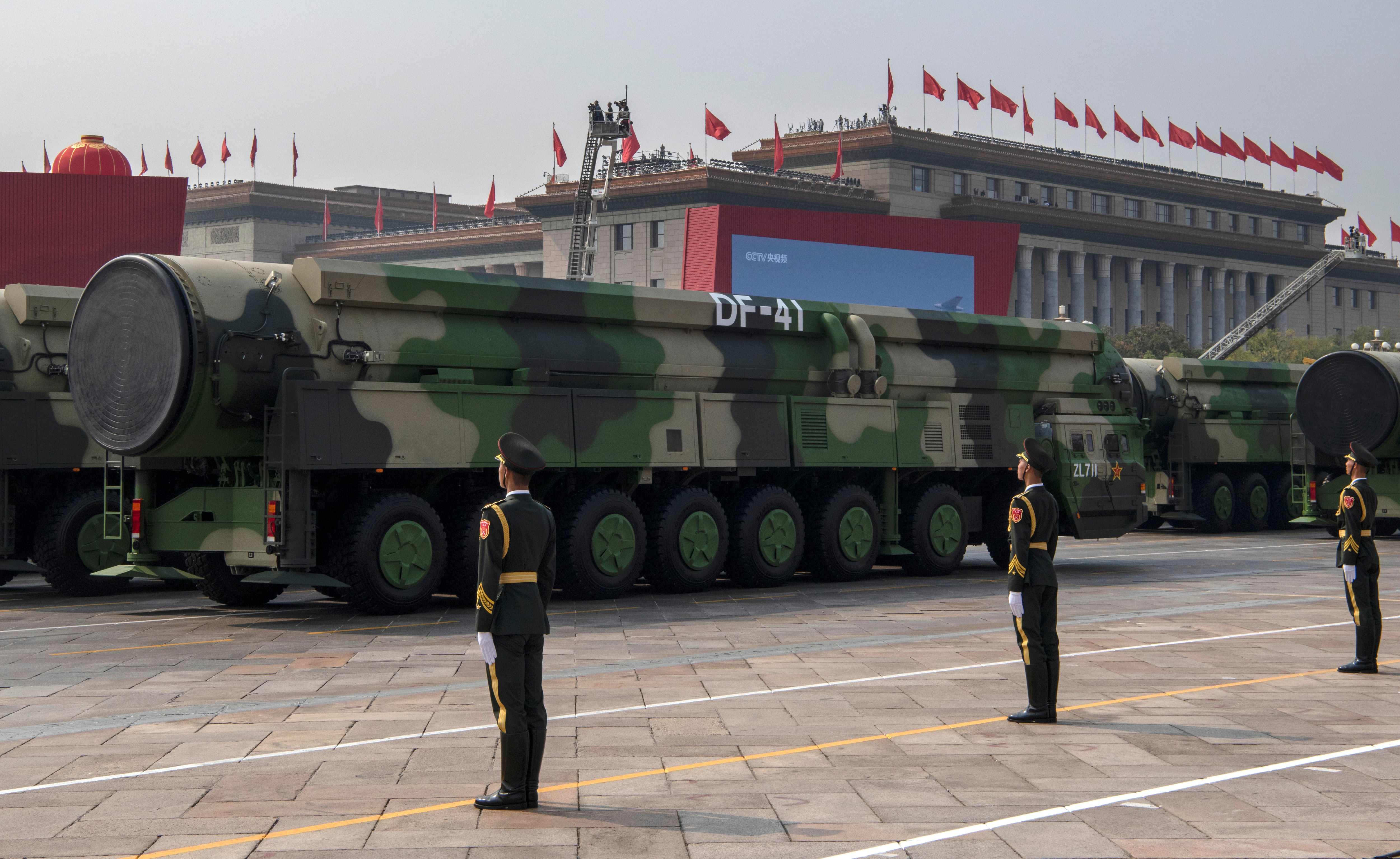After withdrawing from the Intermediate-Range Nuclear Forces Treaty in August 2019, U.S. President Donald Trump envisioned a comprehensive agreement that controlled all Russian and Chinese nuclear systems, including about 100 Russian and 2,200 Chinese ground-launched, intermediate-range missiles. With the Xi government unwilling to join arms control negotiations, the Trump administration expressed interest in a bilateral deal with Russia. To augment its bargaining position and military capabilities, it secured $181 million to develop intermediate-range conventional missiles.
On one hand, the Biden administration should continue building ground-based, intermediate-range conventional missiles, which will have significant operational value. Developing missiles previously restricted under the INF Treaty would create bargaining chips to trade for Russian and Chinese systems. Deploying intermediate-range missiles abroad would pressure the Putin and Xi governments to engage in serious arms negotiations. Plus, U.S. officials could propose an exchange of apples for apples, which would simplify negotiations with Russia and China.
On the other hand, the Biden administration should adopt a realistic approach to arms negotiations with Russia and China. President Trump’s stated objective — rapidly achieving a single accord that controlled all Russian and Chinese nuclear weapons — was a long shot. Given Russian President Vladimir Putin’s readiness to talk, U.S. officials could first seek a bilateral deal with Russia. Then, they could pursue a bilateral accord with Chinese President Xi Jinping.
Chinese and Russian dual-capable, ground-based ballistic and cruise missiles imperil American and allied security. Protected by Integrated Air Defense Systems, they can strike American and allied forces and bases throughout Eurasia. American and allied ballistic missile defenses can intercept adversary missiles, but they could be overwhelmed and destroyed by a committed salvo. Modern missiles, such as Russia’s Iskander-M (also known as SS-26), can also evade ballistic missile defenses.
The Xi government possesses thousands of intermediate-range missiles that can damage U.S. and allied airfields and naval installations throughout the Western Pacific. For instance, the United States maintains seven air bases within 1,100 kilometers of China. By utilizing radar and satellite imagery to detect vessels 2,000 kilometers from mainland China, Beijing can wreck U.S. and allied ships at sea.
The Putin government is deploying intermediate-range missiles to augment its anti-access/area denial capabilities in Kaliningrad, St. Petersburg and Crimea. For example, SSC-8 ground-launched cruise missiles can destroy European targets from deep in Russian territory. Road-mobile, shorter-range missiles, such as the Iskander-M, can also strike Western forces from Kaliningrad and Crimea.
As they develop modern missiles, American policymakers need to convince reluctant allies to host the weapons. If allies refuse, they could deploy systems on U.S. territory in Guam or the Northern Mariana Islands. Without concrete plans to station U.S. missiles abroad, those weapons will not produce meaningful leverage during arms talks.
In this context, U.S. officials can pursue reductions on Russian and Chinese ground-based, intermediate-range missiles separately and in a series of stages. For instance, Putin offered to extend the New START nuclear pact. He also suggested a moratorium on the deployment of intermediate-range missiles in Europe. The Biden administration can exploit both overtures to jump-start negotiations about intermediate-range missiles.
RELATED

A new generation of ground-based, intermediate-range conventional missiles could penetrate Russian and Chinese A2/AD bubbles to strike Integrated Air Defense Systems and time-sensitive targets, including aircraft on runways and missile launchers. For example, the Army’s extended-range Precision Strike Missile, the Navy’s ground-launched Tomahawk land-attack cruise missile and the Navy’s multipurpose Standard Missile-6 will each achieve initial operational capability in 2023.
Developing and deploying intermediate-range missiles would allow the Biden administration to propose an exchange of apples for apples. For instance, Precision Strike Missiles could be traded for Russian and Chinese short-range ballistic missiles. Ground-launched Tomahawks could be exchanged for Russian SSC-8s and Chinese cruise missiles. SM-6s could be offered for Chinese medium-range ballistic missile and anti-ship missiles.
To overcome allied reluctance on basing, the Biden administration can couple missile deployments with arms control negotiations. Allied politicians could sell the basing program as a way to generate leverage to reduce the threat posed by adversarial missiles. If Moscow and Beijing refuse to negotiate, it would shift the onus of blame for U.S. missile deployments to Russia and China.
The Biden administration should not anticipate a rapid breakthrough during bilateral negotiations with Russia and China. As an opening gambit, it can propose a global ceiling on ground-based, intermediate-range missiles. A worldwide ceiling would facilitate future disarmament talks, when U.S. officials could recommend missile reductions. It would also require negotiators to forge consensus about the numbers, types and capabilities of missiles subject to limitation. The INF Treaty, President Ronald Reagan concluded, demonstrated “the rewards of patience.”
Luke Griffith is a a visiting postdoctoral fellow at the Ronald Reagan Institute. He was previously a Stanton nuclear security postdoctoral fellow at the think tank Rand.








